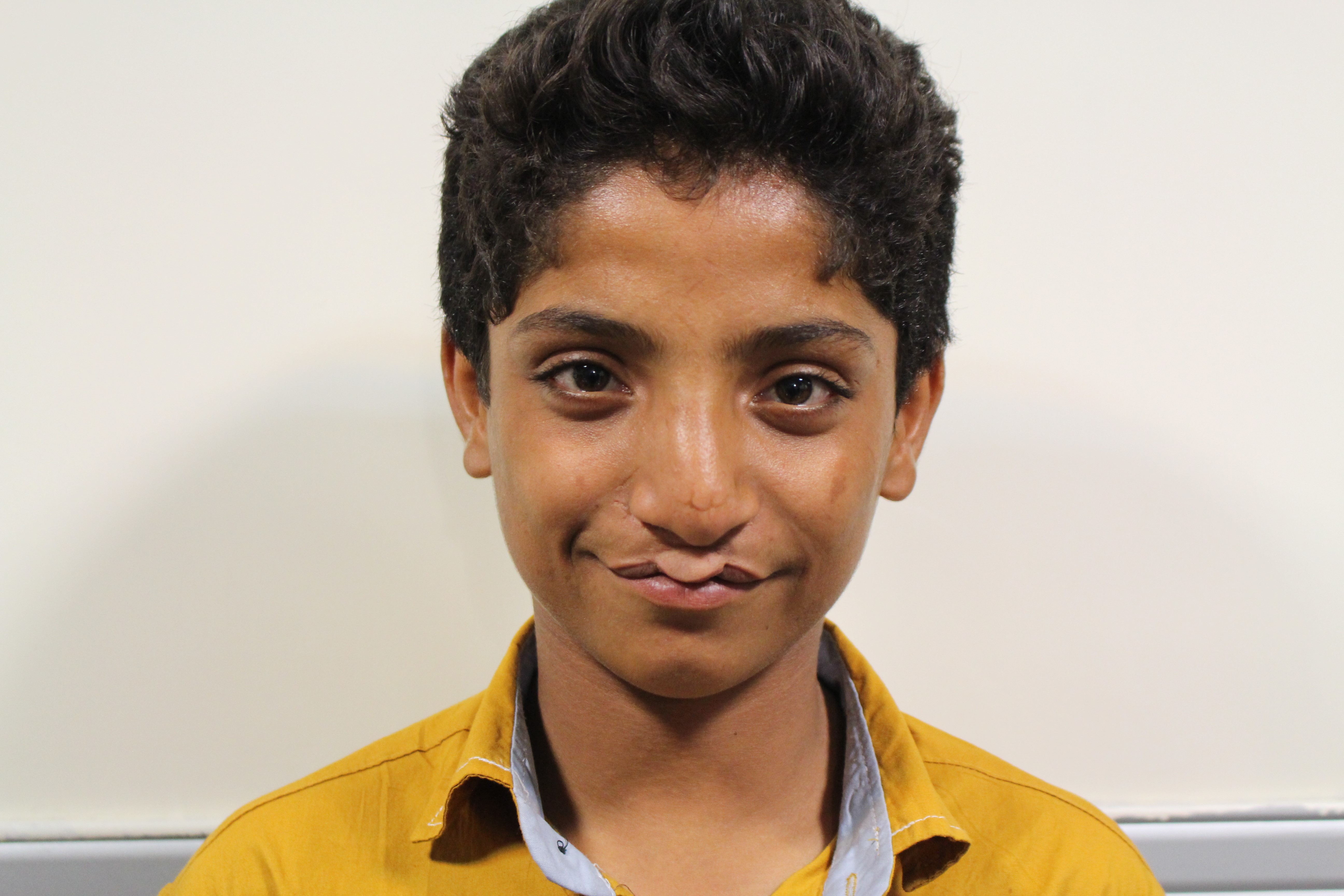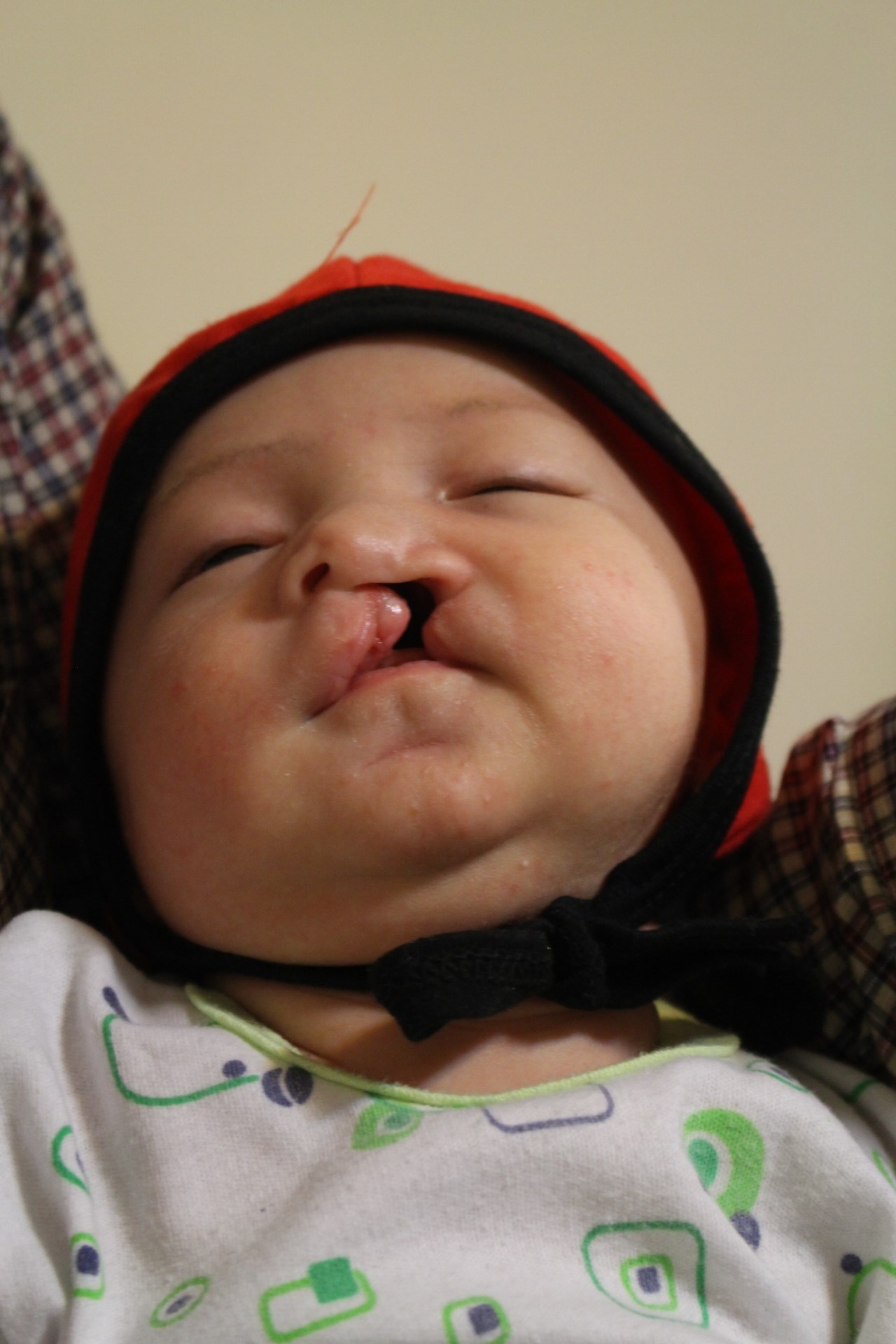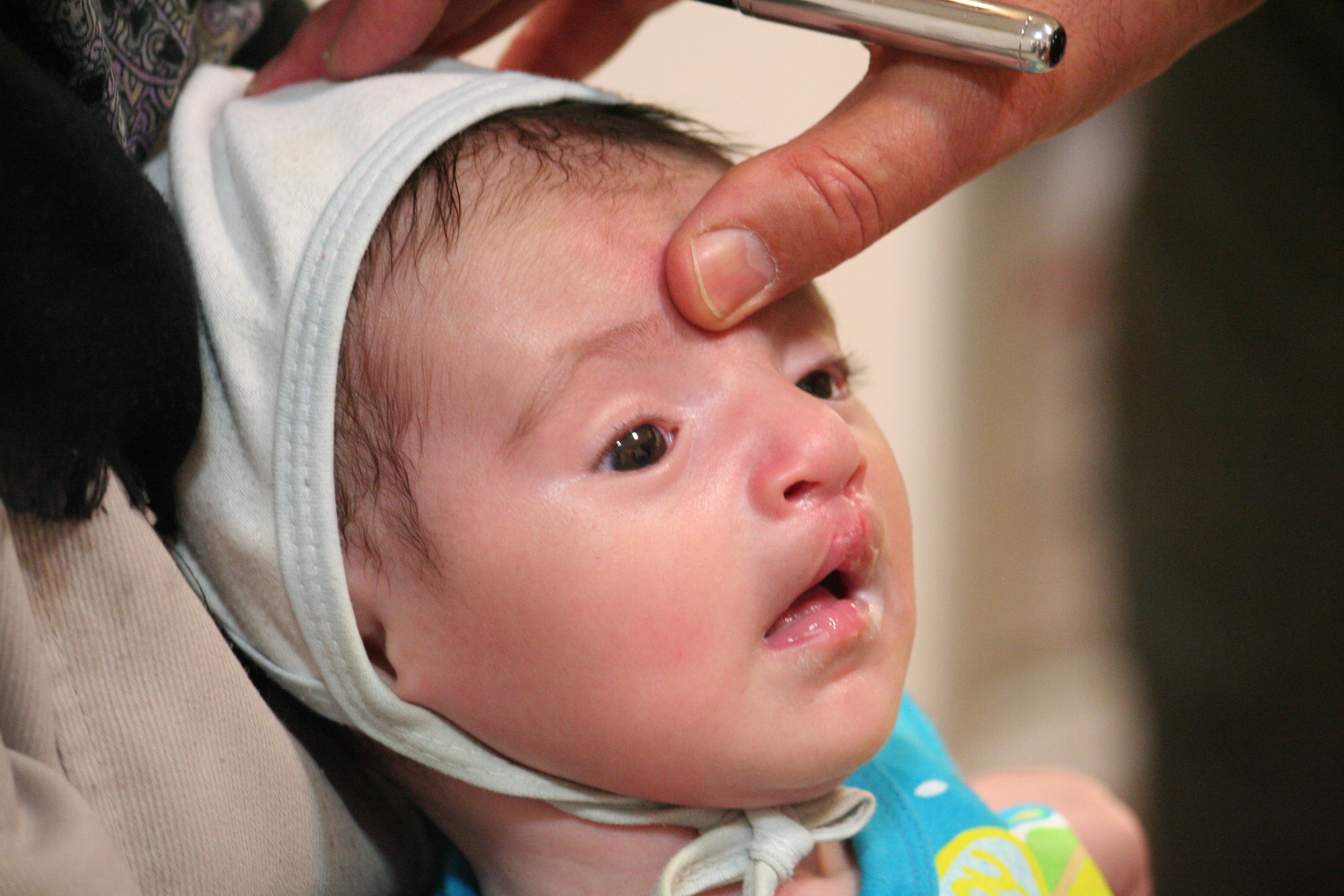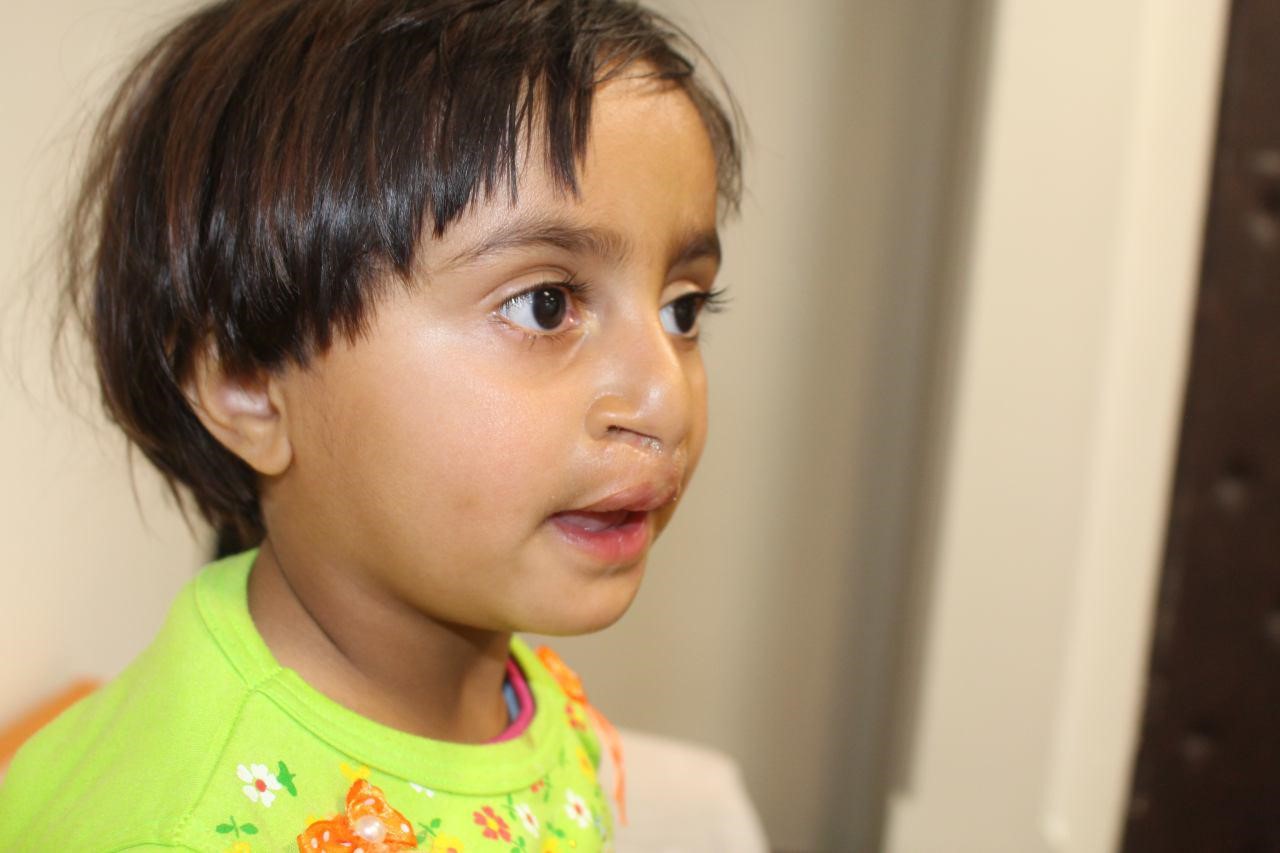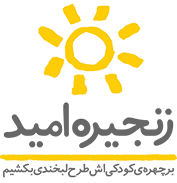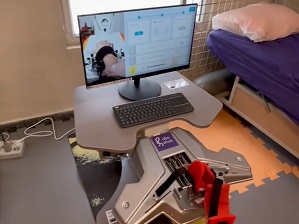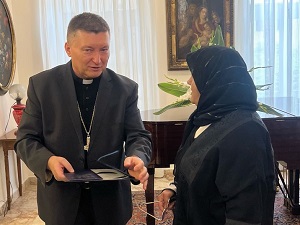Cleft Lip and Palate
Treatment of the Newborns with congenital malformations of Cleft Lip and Palate from birth to adulthood by a subspecialized team
Necessity of the project:
Although treatment of cleft lip and palate are performed by the specialists with different methods on various age groups, lack of a uniform treatment protocol with participation of a subspecialty team resulted in an inappropriate outcome of the newborns treatment. Therefore, Zanjireh Omid Charity Institute has formed a subspecialty team including (Plastic surgeon, Genetics consultant, Subspecialty of pediatric cardiology, Speech therapist, Audiometric, Ear, throat and nose surgeon, Orthodontist and Prosthesis) and treats the patients with a uniform treatment protocol based on the international standards to achieve appropriate results. This will help the children to become a healthy member of the society.
Place of implementation:
The Medical Center for Children. Address: Dr. Gharib St, Keshavarz Boulevard
Project beneficiaries:
20 newborns with cleft lip and palate malformations in one year
Project objectives:
1. Medical objectives
A: The best physical result based on the international standards
B: The best appearance outcome based on the international standards
C: Preventing the physical, mental and social problems caused by these malformations
D: Preventing the swallowing and speech problems
E: Giving nutrition instructions, Timely diagnosis and growth control
F: Timely diagnosis and treatment of the related diseases such as heart and skeleton disease
G: Timely diagnosis of the related genetic disease
2. Social objectives
A: Parents relief and positive mental impact on the patient and his family
B: Giving instructions to the parents on their encounter with these malformations
C: Prevent the similar cases in the family by giving genetics consultations
D: Reduction of the general preliminary treatment costs of these patients
The implementation process:
A: Reception method of the patients
Children are referred to the Institute by legal institutes, The Welfare Organization, UNHCR and individuals
B: Implementation of the treatment protocol based on the international standards with cooperation of the subspecialty team
1. Patients consultations by the subspecialty team including (Newborn specialty, Plastic surgeon, Genetics specialty, Subspecialty of pediatric cardiology, Speech therapist, Audiometrist, Ear, throat and nose surgeon, Orthodontist and Protesist)
2. Identifying the related social problems and treating them by the subspecialized team
3. Orthodontic treatment for Palate, Gum and Nose
4. Lip surgery on 3 to 4 month children by subspecialized plastic surgeon
5. Palate surgery on 9 to 12 month children
6. Ear, Throat and Nose surgery if needed
7. Speech therapy starting on children older than 2.5-years old
8. Palate - throat surgery on 4-year-old children with soft palate – throat malformation
9. Bone grafting on 7 to 9-year-old children and starting the orthodontics
10. Final evaluation when children are 17-year old
11. Plastic surgery on jaw and nose
Procedures and cost of services in the treatment of newborns with congenital malformations of Cleft Lip and Palate from birth to adulthood by a subspecialty team have been calculated based on the governmental K coefficient in 2013
The required equipment:
1. Fluoroscopy: It is an imaging method which is used in radiologic diagnosis and medical physics. This device shows the X-ray which passed through the patient’s body live and then these received signals are observed and recorded by a TV system.
The Fluoroscopy technic is a valuable diagnostic tool in observing soft palate moves and septum of throat during talking. Some of the cleft palate patients because of the structural problems in their throat suffer from Hypernasality (The channel connects nose and throat which should be closed during talking is letting the air into the nose in these patients). This device is used to specify the place to be operated in throat area.
2. Nasendoscope: It is a device that goes through the nose and by that the soft palate and throat can be directly examined. It is connected to a video camera which records the images.
When the speech therapist diagnosed that soft palate do not have enough moves during talk in order to close the connection channel between throat and nose, this diagnostic device can evidently show the malfunction of the soft palate and what happen in throat.
3. 3D Camera: In order to record images of the patients before and after the surgery of lip, nose and orthodontics and to compare the results of a treatment method with another one and to present the treatment results to the international communities the patient’s status should be precisely recorded. The 3D Camera has enough accuracy for this aim. Almost all of the Cleft Lip and Palate treatment centers in UK are equipped with 3D and 4D Cameras.
Type of participation:
A: Treatment of the patients
Each donator can choose one or more children and provide their treatment costs. Obviously, according to the rules of Zanjireh Omid Charity Institute; medical files and treatment reports of the patients will be accessible to the donators.
B: Equipment procurement
According to the list of the equipment, each donator can donate an equipment or participate in its procurement and by doing this help us in proiding the best treatment services.
Treating Legal, Illegal and Stateless Refugee Children with Cardiac, Orthopedic and Reconstructive Disorders and Bringing Them Back to Normal Life
Finding a solution for treatment of legal, illegal and stateless refugee children with cardiac, orthopedic and reconstructive disorders and bringing them back to normal life.
Necessity of the Project
As mentioned earlier, Zanjireh Omid has been providing top medical services in accordance with global standards with the minimum cost for underprivileged children under 18 regardless of their race, religion or nationality since its foundation. There is large number of refugees living in Iran and the cost of their treatment, particularly specialized treatment, is several times higher than for local patients. The underprivileged children suffering from cardiac, orthopedic and reconstructive diseases who come to the institute receive healthcare services, gain partial or complete recovery and become a useful member of society. The project's target group includes children under 18 whom they've had no role in their fate determination. As per The Declaration of the Rights of the Child, Zanjireh Omid Institute attempts to remove the discrimination these children face due to their national origin.
It should be mentioned that low quality and no timely treatment, in addition to physical problems can cause long time disability for them. According to the Article 5 of the Declaration of the Rights of the Child, we should remove this disability by providing the proper conditions for such cases. Having this mind, it is necessary to find a solution for this challenge under the support of donors and Zanjireh Omid's medical team and hopefully bring these children back to life. Concerning the priority of treatment for children supported by Zanjireh Omid and without considering domestic laws of countries, the legal, illegal and stateless children can benefit from therapeutic services offered in the above mentioned fields.
Project Description
Admission Process of Patients
1. Refugee patient’s referral to Zanjireh Omid takes place through UN organization, individuals, general practitioners, hospitals, other charities or self-referral. Upon referral to the organization, the social work department of the institute creates a medical record for the patient.
2. Examination of the patients will take place free of charge by volunteer doctors at the institute's clinic.
3. An inquiry into the patient's financial status will be made by the institute or the center which has introduced him/her through local investigation, or visit into his/her home.
4. Following the diagnosis made by Zanjireh Omid's doctor, if need be, surgery and complementary therapies will be performed on the patient in one of the hospitals contracted by medical team of Zanjireh Omid institute.
5. Required surgical equipment will be purchased by the institute and furnished to the hospital.
6) All the advanced stages of treatment including pre and post-surgical and medical cares will be carried out by the medical team, nurses, physiotherapy, occupational therapy and speech therapy teams in Zanjireh Omid Children's House (children dormitory).
7) Zanjireh Omid provides nutritious meals to mothers and children at Children's House of the institute.
8) With regard to long term treatment of certain cases and lack of access to school for children, Zanjireh Omid provides proper training courses to children by educational volunteers and psychologists.
9) In most cases, parents of refugee children in addition to economic poverty also suffer from cultural poverty, thus Zanjireh Omid aims to promote the level of their culture by holding life skill and primary healthcare classes. The institute also attempts to help them how to face their children's disorders.
10) These children can use physiotherapy and rehabilitation services to restore their physical and mental abilities.
11) Food packages are furnished to them occasionally.
Medical Goals
Reduction of mortality rate among neonatal and children
Disability prevention in the three abovementioned fields in case of treatment failure.
Reduction of complications and disability rates in pre and post operation period.
Prevention of hospital-acquired infections via reduction in hospital stay of children
Reduction of rehabilitation costs
Providing healthcare services to children who need treatment.
Social Goals
To improve the life quality of refugee children and bring them back to healthy life.
To put an end to parents' concern and create a favorable psychological impact on the patients and their family generating hope in their life.
The waiting list for operation and treatment has been reduced by Zanjireh Omid, as a result the possible side effects of delays in treatment has been significantly reduced.
Improving the condition of those family which their child is suffering from a curable disease.
The project beneficiaries
All the refugee children under 18 who are living in Iran (legal, illegal and stateless) and suffering from cardiac, orthopedic and reconstructive diseases.
The Costs of This Project
Under the support of Zanjireh Omid institute, the treatment costs of 300 refugee children suffering from cardiac, orthopedic and reconstructive disorders are estimated at 6,750,000,000. The costs details are as follows:
